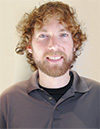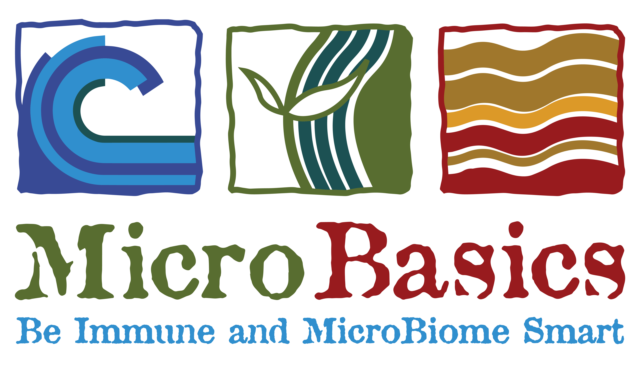After milking, we sat down to a plate of lamb, which is fairly common for lunches on Icelandic farms. Systa, the wife, decided not to prepare the slátur they usually eat on Saturdays – which, in simple terms, is sheep blood (or liver) mixed with fat and oats stuffed in the stomach and often let sit in whey for several months.
They suspected I hadn’t been in Iceland long enough to be ready for slátur. They were probably right.
We talked about the weather, which is exceptionally volatile on the northern part of the island. While there, a strong wind tore the slow-moving vehicle sign off the tractor and sent it (at least in my mind) over the house and to the other side of the property.
They kept an eye on the weather with their desktop or the TV channels, but Rögni, the husband, also had a sparrow near the barn that tells him of the coming conditions with the type of song it makes from the brush. I asked him what they expected the winter to be like.
He leaned forward while Þórunn, his daughter, translated. He said that sometime in the fall, he usually dreams of sheep. If they are white sheep, then it will be a harsh winter. If brown, a mild one. This year, however, he hadn’t had the dream yet.
I’m in Iceland as a Fulbright Scholar, writing a collection of creative essays on Icelandic dairy farming. Not knowing a more graceful way to do it, I began calling random farmers and asking them if I, a stranger and a foreigner, could stay on their farms. Most of them said yes.
The first farm was Flugumyrar Hvammur. Rögni got up at 5 a.m. to set the milkers washing, and Systa, Þórunn and I soon followed. They milked about 30 cows in a stanchion barn. Tiestalls are still very common on the island, although many farms are switching to robots.
The family allowed me to milk with them, pointing to the next cow I was to put the milker on and helping me interpret what the ID placards above their heads meant.
Perhaps one of the most notable things about the barn was that it was immaculately clean. The manure grates were brushed bare with a broom and water, the stalls swept neat, the shed kept tidy and, it appeared, not a blade of hay left between the bale mixer and where the forage was wheeled to the cows.
When mentioning Flugumyrar Hvammur to other Icelanders, they often volunteered that they were good farmers. Rögni, it seemed, was a man that liked the process of farming.
At a certain point in the milking, Systa would leave to feed the calves. I watched Rögni and Þórunn out of the corner of my eyes. They moved quickly and efficiently from cow to cow, their hands working fluidly as they washed each teat, stripped it and put the milker on.
The cows responded to their touch by shifting to give them more room, like a common language was shared. Rögni and Þórunn often shouted to each other over the sound of the pulsation, as if in a hectic battlefield instead. I think it was a communion they both enjoyed.
Several weeks later, I stayed at Arnarstaðir, owned by Gestur and Jónina. Not only did they have a robot, but as is also increasingly common in Iceland, most other aspects of the barn were automatic: The floor was scraped every two hours by a mechanized system, both the cows and unweaned calves ate at feeders that recognized the sensors they wore, and the alley was retractable to allow a lot of hay to be fed at once.
I helped Gestur feed the young calves on bottle, which was one of the few things we had to do ourselves. At the kitchen table, they even got their news from an iPad. Arnarstaðir was, by all standards, an advanced place.
Although there was a time when college students paid their tuition in dried fish, and merely surviving was an arduous mission, Iceland has leapt ahead since.
Their dairy industry employs a quota system, and in exchange for a stable food supply, rural development and the goodwill of the people, the government helps subsidize their income. As a result of the stable market, farms are able to invest in technology and have done so willingly.
When I finished feeding the calves on bottle at Arnarstaðir, I would watch the robot milk. Its metal arm moved stiffly. Sometimes it took several attempts to find the teat. It milked all day, but its body did not have muscles that could retain memory, and therefore it remained awkward.
Yet it also didn’t have kids to pick up from school or the World Cup qualifiers it wanted to watch. It didn’t get upset when a heifer kicked it or worried that it would never stop raining.
I found myself thinking about the complex duality of modernity, which by no means is a new question. Technology brings with it apparent advantages, but perhaps the things lost may be more subtle. Rögni spends more time with his cattle, and I suspect, has a different relationship to them.
Still, with the extra time, Gestur is able to also raise 200 sheep, 30 horses and run a postal route, bringing in more income to the family. I imagine that some people, when they saw the first tractors or milking units, also had bittersweet feelings.
The use of technology, it appears to me, sometimes offers a unique situation in which morality cannot lend an insight: What works for one man may not work for another, despite, perhaps, the inevitability of advancement.
In a decade or two, most Icelandic farms will have robots, and one way of farming will be replaced by another. It will be called progress, and there will be very apparent things to appreciate about it. Still, part of me hopes there will be someone left who is yet dreaming of sheep. PD
Ryan Dennis is the son of a dairy farmer from western New York and a literary writer. The Dennis family dairies and maintains a 100-plus cow herd of Holsteins and Shorthorns.

-
Ryan Dennis
- Columnist
- Email Dennis


.jpg?t=1687979285&width=640)

